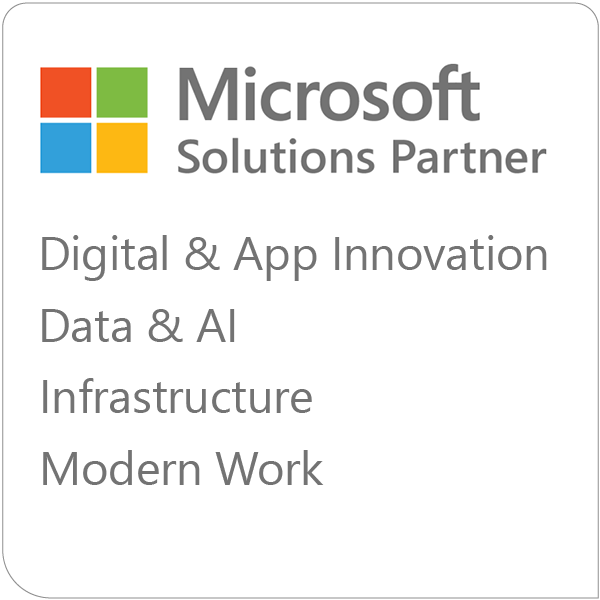Cloud computing has transformed from an emerging technology into a vital enabler of modern business operations. The global cloud market continues to experience tremendous growth, driven by the need for agility, scalability, and cost optimization. Gartner predicts that worldwide public cloud spending will reach nearly $600 billion in 2023, a 21.1% increase from 2022. As we look ahead to 2024, several key trends are poised to significantly shape the cloud landscape.
Serverless Computing Goes Mainstream
Serverless computing, a model where the cloud provider dynamically manages the allocation of machine resources, is rapidly gaining traction. With serverless, developers can focus solely on writing code without worrying about server management and capacity planning. This enables businesses to build and deploy applications faster while only paying for the actual number of resources consumed.
Serverless platforms like AWS Lambda, Azure Functions, and Google Cloud Functions are widely adopted across industries. For example, The Seattle Times uses AWS Lambda to resize images for its website on-demand, reducing infrastructure costs by 90%.
Looking ahead, serverless is poised to become the default choice for a wide range of applications. As the serverless ecosystem matures, expect to see more sophisticated use cases emerge, such as large-scale data processing, machine learning inference, and complex event-driven architectures.
The growing adoption of serverless is also driving innovation in adjacent areas like function-as-a-service (FaaS) orchestration and serverless databases. AWS Step Functions, Azure Durable Functions, and Google Cloud Workflows are examples of managed services that allow developers to build and run complex, stateful applications using serverless functions. Amazon Aurora Serverless, Azure Cosmos DB Serverless, and Google Cloud Firestore are serverless database offerings that automatically scale based on demand, enabling developers to build applications with virtually infinite scalability.
Edge Computing Expands
While the cloud offers unmatched scalability and flexibility, there are scenarios where processing data closer to its source is essential. This is where edge computing comes in - it complements the cloud by bringing computation and data storage to the network's edge.
The proliferation of IoT devices, the rollout of 5G networks, and the increasing demand for real-time, low-latency applications are major drivers behind edge computing's growth. Gartner predicts that by 2025, over 50% of enterprise-generated data will be created and processed outside centralized data centers or clouds, up from less than 10% in 2021.
The manufacturing sector is a prime example of where edge computing is making a significant impact. Smart factories are leveraging edge computing for real-time machine monitoring, predictive maintenance, and automated quality control. An automotive company, for instance, is using AWS Outposts, a fully managed service that brings AWS infrastructure and services to the edge, to enable low-latency data processing in its production facilities. By analyzing data from sensors and cameras at the edge, they can quickly detect defects, reduce waste, and optimize its manufacturing processes.
The telecom industry is another area where edge computing is playing a crucial role. With the rollout of 5G networks, carriers are deploying edge computing infrastructure to support new use cases like augmented reality, cloud gaming, and connected vehicles. AT&T, for example, is partnering with Google Cloud to deliver 5G edge computing solutions that can handle demanding workloads like video analytics and immersive gaming. By processing data closer to the user, edge computing can provide the ultra-low latency and high bandwidth required for these applications.
As edge computing matures, we can expect to see the emergence of a more decentralized computing model where data is processed across a continuum of devices, from the edge to the cloud. This will require new architectures, programming models, and management tools to ensure seamless integration and optimal performance.
AI/ML Workloads Accelerate in the Cloud
Artificial intelligence (AI) and machine learning (ML) are transforming virtually every industry. However, training complex AI models and running large-scale inference workloads requires immense computational resources. The cloud provides an ideal environment for AI/ML due to its scalability, specialized hardware like GPUs/TPUs, and extensive library of AI services.
Major cloud providers are heavily investing in their AI capabilities. AWS SageMaker, Azure Machine Learning, and Google Vertex AI are powerful platforms that democratize ML, making it accessible to developers and data scientists of all skill levels. These platforms offer pre-trained models for common tasks like image recognition, natural language processing, and demand forecasting, allowing businesses to quickly build and deploy AI applications.
One sector where cloud-based AI is having a profound impact is healthcare. Hospitals and research institutions are using ML to analyze medical images, predict patient outcomes, and accelerate drug discovery. A hospital, for instance, partnered with IBM Watson Health to develop an AI model that can predict the likelihood of patient mortality, helping doctors make more informed treatment decisions. By training the model on vast amounts of historical patient data in the cloud, they were able to achieve high accuracy and scale the solution across its network of hospitals.
In the financial services industry, AI is being used for fraud detection, risk assessment, and algorithmic trading. JPMorgan Chase has developed a cloud-based ML platform called Athena to enable data scientists across the firm to collaborate and build models faster. The platform, built on AWS, provides a centralized repository for data, models, and code, along with tools for model training, validation, and deployment. By leveraging the scalability and flexibility of the cloud, JPMorgan Chase can develop and deploy AI models much faster than with on-premises infrastructure.
Cloud Security and Privacy Remain Paramount
As more sensitive data moves to the cloud, concerns around security and privacy continue to be top of mind. Cyber threats are constantly evolving, and regulatory requirements like GDPR and CCPA place strict obligations on how personal data is handled.
Emerging technologies like confidential computing and homomorphic encryption are gaining prominence to protect data while in use, in transit, and at rest. Confidential computing leverages hardware-based trusted execution environments (TEEs) to isolate sensitive data, even from the cloud provider. AMD's SEV (Secure Encrypted Virtualization) and Intel's SGX (Software Guard Extensions) are examples of TEE technologies being integrated into cloud platforms to enable confidential computing. Microsoft Azure, for instance, offers DCsv2-series virtual machines that feature AMD SEV technology to protect data in use.
Cloud providers are also investing heavily in security automation and AI-powered threat detection. AWS GuardDuty, Azure Security Center, and Google Cloud Security Command Center are examples of services that continuously monitor for malicious activity and provide actionable alerts. These tools leverage ML to analyze vast amounts of security telemetry data and identify anomalies that could indicate a breach.
In addition to technological solutions, cloud providers are also focusing on compliance and governance. All major cloud platforms offer a wide range of certifications and attestations, such as ISO 27001, SOC 1/2/3, and PCI DSS, to help customers meet their regulatory obligations. They also provide tools and frameworks for managing access control, data encryption, and security policies across multiple cloud services and regions.
Multi-Cloud and Hybrid Cloud Strategies Dominate
No single cloud can be everything to everyone. Each cloud provider has its unique strengths and offers differentiated services. This is leading the majority of enterprises to adopt multi-cloud strategies - using a mix of services from various providers to meet their diverse needs.
At the same time, many organizations are operating in a hybrid cloud model, combining public cloud services with on-premises infrastructure. This approach provides the flexibility to keep certain workloads on-prem for reasons like regulatory compliance, performance requirements, or leveraging existing investments.
As multi-cloud and hybrid cloud become the norm, we can expect to see more innovation in cross-cloud services, such as multi-cloud databases, serverless platforms, and AI tools. Cloud providers will also focus on improving interoperability and data portability to enable seamless application mobility and avoid vendor lock-in.
Looking Ahead
The five trends discussed - serverless computing, edge computing, AI/ML acceleration, security and privacy, and multi-cloud/hybrid cloud - will play a crucial role in shaping cloud computing in 2024 and beyond. Businesses across sectors must carefully evaluate how these trends align with their goals and craft appropriate adoption strategies.
As serverless computing becomes the norm, organizations will need to rethink their application architectures and invest in skills around event-driven programming and function orchestration. The rise of edge computing will require businesses to develop robust strategies for processing and analyzing data at the edge while ensuring seamless integration with central cloud systems.
To fully harness the power of AI/ML in the cloud, organizations must focus on building strong data foundations, fostering collaboration between data scientists and domain experts, and establishing governance frameworks to ensure responsible AI deployment. As security and privacy concerns intensify, businesses must stay abreast of the latest threats and invest in advanced technologies like confidential computing and homomorphic encryption to protect their most sensitive data.
Finally, as multi-cloud and hybrid cloud become the dominant paradigms, organizations must prioritize application portability, data consistency, and operational efficiency. Adopting cloud-native technologies like containers and Kubernetes, along with leveraging cloud management platforms, will be key to thriving in this complex landscape.
One thing is for sure: cloud computing will remain a key driver of business transformation in the digital age. It is the foundation that enables companies to innovate, gain valuable insights, and maintain stable operations in an ever-changing world. As businesses chart their course through the uncertain times following the pandemic, cloud technologies will be their guiding force, helping them discover new possibilities and achieve success. The road ahead looks promising, and the cloud will play a central role in shaping it.






